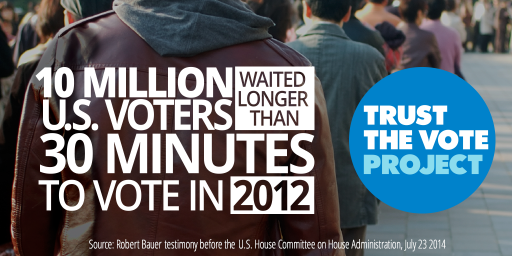Our Midterm 2014 Election Predictions
Ok, here are my predictions for next month’s election (now just days away): The U.S. Senate will be controlled by the……..
No, wait, we don’t do that here. We don’t have a dog in that hunt at all.
But we can make at least three safe predictions about the elections:
- Alaska will draw a lot of attention, partly because Republican Dan Sullivan and the incumbent, Democrat Mark Begich, are in a tight race that could decide U.S. Senate control, and because Alaska is the only state experimenting with online voting. More on that in a separate post.
- There will be glitches, many glitches. We can even predict the kinds of glitches. Why? Because during the primary election season this year, frequent and regular hindrances with elections turned up in counties and cities across the country. It won’t be any different on Nov 4.
- We can predict that when there are problems on Election Day, including long lines to vote, people will gripe about it on social media. And local and national media will hear about it quickly as a result.
Let’s first go through the primary snags you’re likely to see.
The dog-ate-my-ballot glitches
It doesn’t matter which form voting takes – mail-in, electronic, optical scanner, ballots just seem to sometimes, well, disappear. Here are just three examples:
- In San Francisco, just this month, U.S. Postal Service machines mangled between 8,000 and 10,000 mail-in ballots being sent to voters. Fortunately there is time to recover and send out new ones before Nov. 4
- In Harris County, Texas, also this month, hundreds of early mail-in ballots were held temporarily at the local post office for insufficient postage, which totaled just $57.00. Many of the envelopes were just 1 cent short.
- Officials in Green County, Wisconsin, in August told the state that following a state senate primary race that had two candidates just seven votes apart, a canvass found that 110 ballots went missing. After interviewing poll workers, the county clerk said it could not be determined where the ballots were so the requested recount proceeded without them.
Vote counting conniptions
Disruptions, delays, and equipment breakdowns in vote counting were particularly common this year and the frustrating thing about these reports is that the news media rarely asked the follow-up questions of elections officials about what exactly was the “computer glitch” or “software error” that caused the problem. More specificity would help—not that [a] the official would know the answer or [b] even of they did that they would be willing to disclose. But suffice it to say these problems in vote counting are widespread—I’ll offer just four examples:
- In Lee County, Florida, 7,000 voters simply dematerialized. When election officials checked votes cast against turnout figures, turnout was 7,000 voters higher than it should have been. Officials blamed it on an unspecified computer error and said all races were affected proportionally so no race results were altered. We can hope.
- In Hawaii’s August primary, 800 votes were lost from Maui, and several statewide and local races were within that 800 vote margin. The audit of the vote discovered the loss; a data card from Maui had failed to transmit its votes to the central counting facility.
- In North Carolina’s May primary, the state’s new vote tabulation system failed on election night, showing abnormally high percentages of precincts reporting results just minutes after the polls closed. A spokesman said the errors were caused by programming issues.
- In Conchise County, Arizona, elections officials are conducting a “forensic” investigation of how the August primary vote count there increased between the time it left the county and the time it arrived at the state elections office via modem and thumb drive.
On November 4th the world will be watching, and not just for the election results. We need to get our elections house in order. That’s why we do what we do at the TrustTheVote Project – building an open-source complete election technology platform for states and localities to adopt and adapt to their own local requirements and regulations (without spending precious millions of dollars to do it) so that one day these predictable elections related glitches will be few and far between. While we cannot ever claim that the technology we’re producing for public benefit will eliminate all of the problems we witness in elections administration and voting, we can confidently predict that our open source elections technology framework can and will increase verification, accuracy, security and transparency in the processes of casting and counting ballots.

